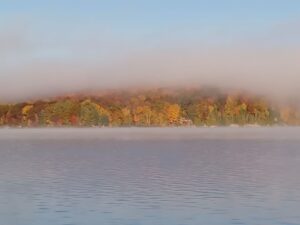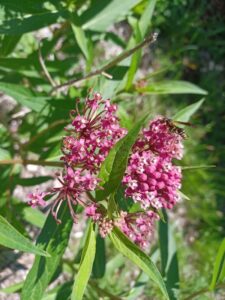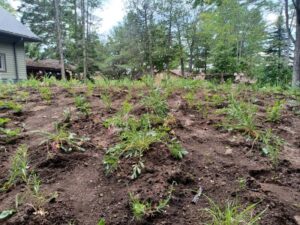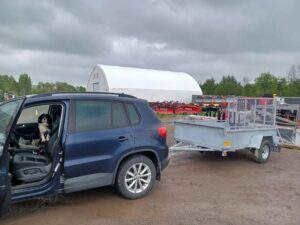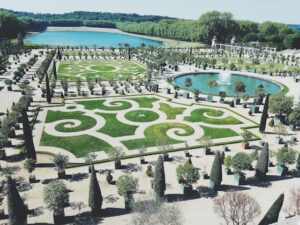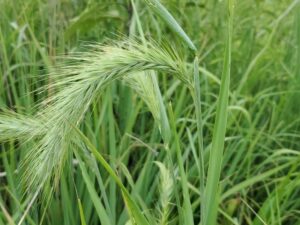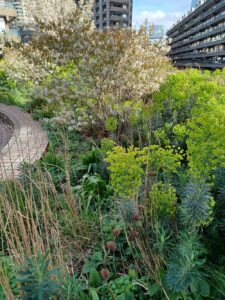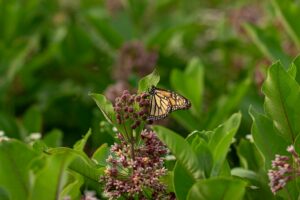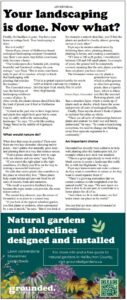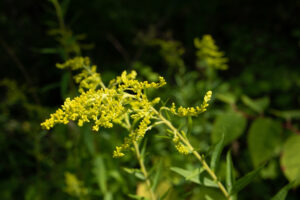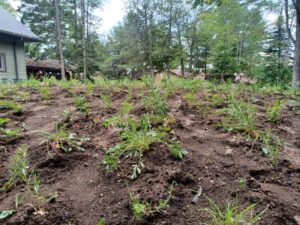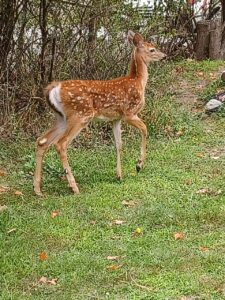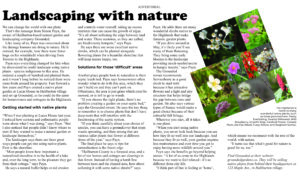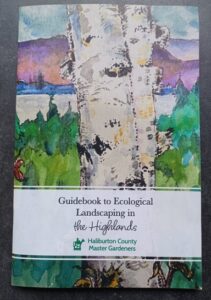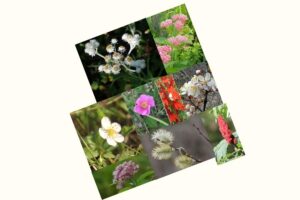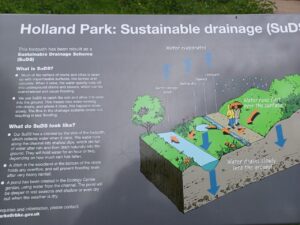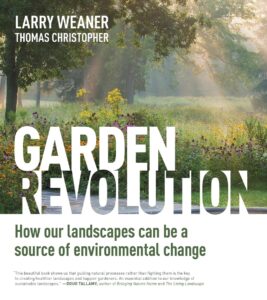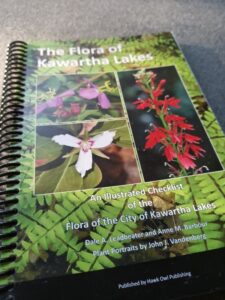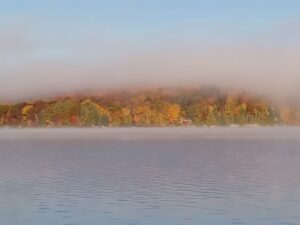The Grounded Blog
Newsletters
Making Gardens
Your cottage landscaping is done. Now what?
Here is an advertorial about using native plants in Haliburton cottage landscaping published in the June 27, 2024 issue of The Highlander.
Natural landscaping: how to choose the right plants
Creating natural landscapes isn’t just about native plants. It’s more like playing a 4D game of Tetris. Here’s how I choose the right plants.
Weeding native plant gardens: a dance with nature
I was out weeding the native plant garden at Lucas House this week, before it got too hot. Just an hour later, I felt 100 times better.
Two very different Haliburton native plant landscapes
Here are two Haliburton native plant landscapes Grounded has installed this past month. One is a dry prairie-style garden on a septic leach bed, the other is a shade garden on a steep slope.
Deer and native plants: Will your garden get eaten?
There is no such thing as a totally deer-resistant plant. But native plants have a better chance of being nibble-free than most.
My most important advice about your natural garden
When I install a new garden, I provide a handbook, explaining the plants in the garden and how to manage the garden in the future. Of all the advice in the handbook, this is the most important.
Native Plant Landscaping: Getting Started in Haliburton
We explore the benefits of native plant landscaping in Haliburton and how to get started at your home or cottage.
Ecological Landscaping in Haliburton County: New Guide Tells You What You Need to Know
This new guide from Haliburton County Master Gardeners provides an excellent overview of what ecological landscaping is – and how you can transform your landscape into something that’s beautiful to you and to the rest of nature.
Haliburton Native Plants Explained
An in-depth look at the benefits of native plants, how we decide what’s native to Haliburton County, and a list of plants considered native.
On bioswales, SuDS and rain gardens
There are many ways to create a natural garden – and some of those ways can fulfil vital roles for us. Here’s a sign about a SuDS installation. SuDS (Sustainable Drainage System) is basically a way to use plants and the ground to improve drainage. Instead of concrete which funnels water quickly away and could…
Growing a Green Renaissance
Gardening for the environment: ecological landscapes beautiful to us and nature
A look inside the book Garden Revolution, a beautiful inspiration for those of us who want to garden for the environment.
Native Plants Are Messy: Is That True?
Native plant gardens are messy. That’s the number one claim that people such as myself face. But are natural landscapes really an unruly tangle?
Nature’s Echo: Rediscovering Human Identity through Native Gardening
The deep, intrinsic connection with the natural world, once the bedrock of human existence, has been eroded by the pursuit of progress and convenience. This disconnection has not just scarred our planet; it has left an indelible mark on our very sense of self. Amidst this backdrop of alienation, native gardening emerges not just as a horticultural practice, but as a beacon of hope, a pathway to rediscover our true identity and reclaim our place in the natural world.
Rooted in Region: How Native Plant Gardens Foster a Sense of Place
Traditional gardens, with their often non-native and cosmopolitan plant selections, can sometimes blur regional distinctions, creating a homogenized landscape that lacks a true sense of locality. In contrast, native plant gardens offer a vibrant alternative, deeply rooted in the region’s natural heritage and ecological makeup.
Cultivating Love: The Garden’s Path to Global Compassion
In the tranquility of our gardens, amid the rustle of leaves and the hum of bees, a profound transformation unfolds. It’s a journey of the heart, where the simple act of nurturing plants becomes a pathway to cultivating a deeper love – not just for our gardens but for the entire world.
Sowing Seeds of Change: Garden Rebellion as a Model for Environmental Action
In the quiet corners of our backyards, a revolution is taking root. It’s called the garden rebellion — a movement where ordinary gardeners are transforming their manicured lawns into wild, native havens. But this movement is more than just about changing gardening practices; it’s a microcosm of the societal shifts needed to combat global challenges like climate change and biodiversity loss.
Are You a Garden Rebel?
A new breed of gardener is emerging. These are the ‘garden rebels’ — individuals who are breaking away from the traditional, manicured lawns and perfectly pruned flower beds to embrace a more natural, sustainable approach to gardening.
Working with Nature, Not Against It: The Joy of Native Plant Gardening
Gardening, long viewed as a laborious battle against the whims of nature, is being reimagined. The traditional image of endless weeding, watering, and pest control is giving way to a more harmonious approach: native plant gardening. This method is a dance with nature, not a fight against it.
Conforming to Green: How Lawn Culture Impacts Our Inner Well-being
In the suburbs of Ontario and even on some Haliburton County cottage properties, the lawn reigns supreme. This emerald expanse, a hallmark of residential aesthetics, has long been cherished as a symbol of beauty and order. But beneath its lush facade, lawn culture harbors a less discussed aspect: its psychological and spiritual impacts on individuals and communities.
Bringing Back Biodiversity
Kawartha Lakes native plants: New guide gives detailed lists
The Flora of Kawartha Lakes, which lists plants native to the region, is also relevant to Haliburton County’s flora.
Haliburton Shoreline Naturalization: Better for the Lake, Better for You
An in-depth look at shoreline naturalization for Haliburton County cottages: why it’s important and how to do it.
It’s OK to mow in May − the best way to help pollinators is by adding native plants
If you are interested in supporting pollinators, it is important to consider the ecological context of your yard – and #NoMowMay may not be an effective strategy.
From Pollinators to Whole Ecosystems: Expanding Our Gardening Focus
In recent years, the surge in popularity of pollinator gardens has been a heartening development for environmental enthusiasts and gardeners alike. These gardens, teeming with bees, butterflies, and other pollinators, have become symbols of ecological awareness and conservation. Yet, as we delve deeper into the realms of sustainable gardening, a broader perspective emerges, one that considers not only pollinators but the entire ecosystem.
Leave the dead plant stems!
With this scarily warm weather we’ve been having, it’s tempting to get out there and do a bit of tidying up in the garden. Please wait!
Connecting Nature: Building Wildlife Corridors with Urban Native Gardens
In the heart of urban landscapes, where concrete often overshadows greenery, wildlife corridors serve as critical lifelines. These green passages, created through thoughtful planting of native gardens, provide a refuge for urban wildlife, connecting isolated natural habitats.
Native Gardens: Your Personal Contribution to Fighting Biodiversity Loss
In the face of climate change and biodiversity loss, feelings of helplessness are common. Yet, there is a powerful tool within our reach to combat these global challenges: native plant gardening. This practice not only offers environmental benefits but also empowers individuals to make a tangible difference.
The Invasive Plant Problem: Origins, Impacts, and Solutions in Haliburton Gardens
In the picturesque landscape of Haliburton County, a silent challenge is lurking in gardens and landscapes: invasive plants. These uninvited guests, often brought in through ornamental gardening or accidental transport, pose a significant threat to the local ecosystem.
Haliburton’s Homegrown National Park: The Power of Native Plant Gardens
A quiet revolution is underway, inspired by the visionary ideas of ecologist Douglas Tallamy. It’s a movement transforming private gardens into vibrant ecosystems that collectively form a new kind of national park — one dedicated to biodiversity. This concept, where every backyard becomes a haven for native species, is reshaping our approach to conservation and redefining our relationship with nature.
Beyond Aesthetic: The Hidden Environmental Toll of Lawn Culture
In Haliburton County and across Canada the lush, green lawn has long been a symbol of garden perfection. However, this seemingly benign landscape choice has far-reaching environmental implications.
Get updates by email
Fill out the form to get updates about Grounded and The Garden at Lucas House.

